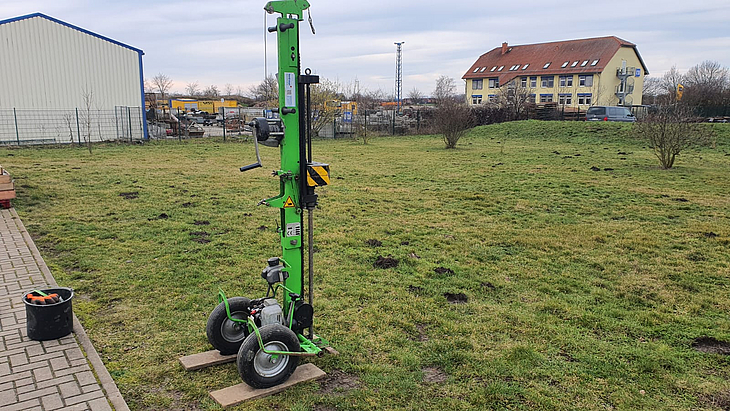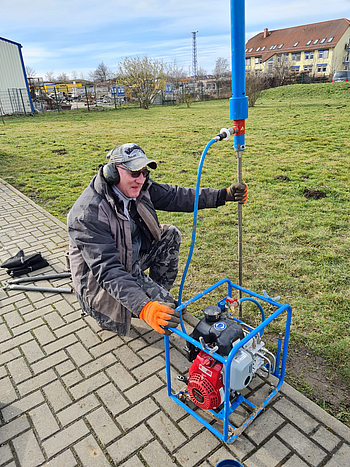Dynamic penetration
Table of Contents
1. Indirect methods for foundation exploration
Soundings can be carried out to complement boreholes or other investigation measures. At selected points, often depending on the depth, the reaction of the existing subsoil to a defined, usually mechanical load is measured. This makes it possible, for example, to follow the course of a layer boundary between drilling points or to estimate the stability of the load-bearing soil.
The most common soundings include: dynamic penetration and static penetration testing. Soundings can be performed either from the ground surface or from boreholes. As indirect methods, they can only be evaluated through interpretations that have empirical and statistically validated relationships to the ground properties.


2. Driving rods
The dynamic penetration is carried out with a soil penetrometer consisting of a probing rod and a probing tip. With a pile hammer, which has a defined mass, this soil penetrometer is driven into the ground. The height of the drop remains the same, while the number of blows is recorded for a specific penetration depth (e.g. N10 for 10 cm).
There are three types of driving rods: DPL (Dynamic Probing Light), DPM (Dynamic Probing Medium) and DPH (Dynamic Probing Heavy).
- The DPL is run by hand and can be used up to a depth of about 10 m. It is often used as a control instrument during soil replacement or backfilling.
- The DPM was developed for heavy soundings in poorly accessible areas and can be transported by two people.
- The DPH is used for deeper or more firmly coated soil layers and is moved by a tracked vehicle.
3. Evaluation of dynamic penetration tests (incl. video)
The interpretation of the penetration test resistance in water-saturated cohesive soils is possible to a limited extent only due to the influence of excess porewater pressure and linkage friction. Groundwater reduces the probing resistance. Dynamic penetration tests can be evaluated using the GGU-STRATIG program. If the dynamic penetration test is in the area of groundwater, the colored evaluation of the number of blows can be carried out according to the depth above or below the groundwater.
Notes on use
All texts, images and media listed here are subject to copyright and are the intellectual property of Civilserve GmbH. Use is only permitted with appropriate reference and a link to this source.